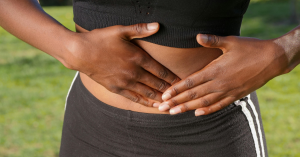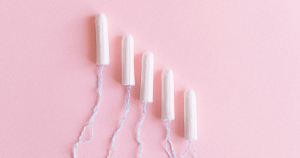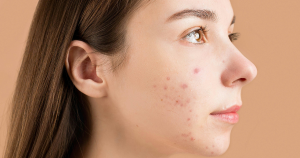Cycle syncing has been a buzz word in the wellness community for years now, but what exactly does it mean and how is it done?
Cycle syncing means adapting your schedule, lifestyle and activities to correspond with the stages of your menstrual cycle. This might mean changing your diet, exercise routine, work schedule and sex life depending on the time of the month, with the aim to optimise your wellness and productivity based on fluctuating hormone levels.
It certainly sounds like a lot of work, though many women have reported excellent results and an enhanced connection to their body through cycle syncing. Let’s dive a bit deeper to see if this may be a practice that works for you.
The Four Phases of the Menstrual Cycle
In order to work out how to optimise your flow, it’s important to understand the stages that people with periods go through in a month and the hormonal changes that come alongside them.
Generally speaking, a woman’s hormonal cycle works on a 28 day basis. Within that cycle, there are four distinct phases.
- Menstruation (roughly days 1-5)
The actual bleeding is the first stage of the menstrual cycle. During the end of the previous cycle, the lining of your uterus begins to thicken out in order to support a pregnancy. However, when an egg is not fertilised, this lining is no longer needed and the body begins shedding it via a lovely combination of blood, tissue and mucus. For the average person with a period, this takes around five days, though can take as little as two days and as many as seven to complete in full.
2. The Follicular Phase (roughly days 1-13)
The follicular phase actually starts on the first day of your period, meaning that it overlaps with menstruation and finishes when you ovulate. This makes it the longest stage in the menstrual cycle. During this phase, the pituitary gland releases a hormone called FSH (Follicle-Stimulating Hormone). Follicles are small, fluid filled sacs located inside your ovaries that contain an egg that can potentially be fertilised. During the follicular phase, FSH causes 5-20 of these follicles to rise to the surface of the ovaries. Over time, a single follicle will become dominant and a healthy egg can mature within it. This egg will eventually be released when you ovulate.
The dominant follicle will then release more estrogen in to the body, causing the lining of your uterus to thicken up so that the egg may be able to implant there when it is released.
3. Ovulation (roughly days 14-16)
Increased estrogen levels generated during the follicular phase then trigger the pituitary gland to release another important hormone called LH (Luteinizing Hormone). This is the hormone responsible for kicking off ovulation.
Ovulation is the process in which your body releases the mature egg that has been ripening during the follicular phase. Lasting around 24 hours, ovulation is the period during your cycle in which you can get pregnant.
4. Luteal phase (roughly days 17-28)
In the beginning of the luteal phase, the egg released during ovulation travels down one of the fallopian tubes (the tubes that run from your ovaries down to your uterus) and can then be fertilised by sperm. If the egg is fertilised, you may fall pregnant. If it isn’t fertilised, the egg will simply disintegrate, and the body begins the process all over. The luteal phase begins when the egg starts its journey, and ends when the egg disintegrates and the body begins thickening the uterus lining again in preparation for another cycle.
During this stage, the two key hormones previously mentioned (FSH and LH) will begin to decrease and hormone levels will return to normal.
How Does Cycle Syncing Work?
Now that we understand what is happening during each part of the menstrual cycle, we can see that the phases are distinctive in their function. Each phase comes with its own unique emotions, physical limitations and energy levels, and many people with a period feel that adapting their lifestyle accordingly increases their happiness and productivity.The hormones present at each phase can affect every part of your life including energy levels, our mood, skin, the activities that you’re interested in and and the types of food you crave.
Let’s explore further how each phase can influence your mental, physical and emotional balance.
Your Feelings At Each Stage of The Menstrual Cycle
- Menstruation: estrogen levels are at their lowest meaning you are likely to lack energy and feel tired and irritable. Physical pain during cramps can add to general discomfort and low mood
- Follicular phase: hormone levels begin to rise and you begin to feel happier and more energised following the lull of your period
- Ovulation: estrogen and progesterone levels are at their highest just before ovulation, meaning this is likely the time where you feel the most energy and have more sexual desire
- Luteal phase: following ovulation, hormone levels start to drop again and the body begins preparing for your next period. You may find this is a time of low energy and mood swings as your hormones fluctuate and emotions run high. Many women experience PMS during the seven days in the lead up to their period causing feelings of stress and depression
With this knowledge in mind, here is the complete guide to how you can cycle sync each aspect of your life to get a hormonal advantage:
Cycle Syncing Your Schedule
- Activities During Menstruation
Do: focus on rest, relaxation and self care. You may find this is the best time for curling up on the sofa with Netflix, reducing work stress, keeping weekend and evening plans light and taking time to do self care activities. Prioritise rest, nutrition and good quality sleep during this time and don’t push yourself to be your most productive. You may find this to be a good time for reflection and goal setting rather than actually ‘doing’ and implementing change.
Don’t: take on tasks that require large amount of energy such as organising events, high ticket work tasks, moving house, spring cleaning, meeting the in laws or socialising with large groups of people. You are likely to be at your most disagreeable at this time of the month, meaning meeting new people is probably not the best idea
2. Activities During the Follicular Phase
Do: lean in to increased productivity and optimism by taking on tasks that require problem solving skills and higher levels of energy. This could be the optimum time for organising that big presentation at work, hosting events, having difficult conversations, advocating for yourself, socialising with friends and traveling. Use your optimism to achieve realistic goals and invest in your growth
Don’t: overcommit yourself for the rest of the month. Though this may be the time that you feel most productive and ready to socialise, your hormone levels will likely have fluctuated again by the time those plans come around. Be gentle with yourself and try not to be overly idealistic about what you can achieve during this time and afterwards
3. Activities During Ovulation
Do: be a daredevil and lean in to the peak of your cycle. This is a time for action, not planning. At work, carry out any difficult short term or once off activities like big meetings or asking for a pay rise. Anything that you’ve been putting off, do it now as your energy levels reach their monthly climax. You may also find this is the best time to take on more exhilarating activities like exploring a new place, trying something like ceramics, painting and participating in outdoor adventures. This is also the time where you are fertile and may feel the most horny – take advantage by organising romantic moments with your partner
Don’t: dilly dally – now is not the time for slow paced activities, take action and see the best results. With that said, don’t burn yourself out by taking on too much. Your hormone levels are about to take a dip, so prepare for this by setting boundaries and fine tuning your activities to do what is most productive without overpromising
4. Activities During the Luteal Phase
Do: begin to gradually ramp down your activities, assess the achievements of the month and slowly begin to plan for the future. Take stock, clear your inbox and use the clarity from the hormone decrease to make firm plans and decisions. This may be a time for meeting deadlines, getting reorganised both at work and home, clearing out your cupboards for the new month, making meal plans and long term decision making
Don’t: take on any new projects or commitments at this time outside of what you’re comfortable with. You’re approaching the most difficult part of your cycle – PMS may begin and your mood could be getting progressively worse, so don’t push yourself too far outside of your comfort zone. You may feel this is not a time for taking on creative projects or making new friends. Hunker down and take stock of your recent achievements for the best future outcome
Cycle Syncing Your Diet
- Foods for Menstruation
Eat: since your body is losing blood, choose iron rich foods like lean meats, eggs, tofu, nuts, seeds and dark leafy green vegetables. Foods containing vitamin C help with iron absorption, so you may find citrus fruits, broccoli or berries a good accompaniment. Don’t be afraid to indulge in a little of what you fancy during this difficult time of the month, be that good quality chocolate or your favourite takeout food (though take it easy – see below). Be your own best friend and let yourself have a little of what you fancy to perk up a difficult time
Avoid: excessive amounts of salt, sugar and processed foods can increase period pains and bloating. Alcohol and caffeine can also exacerbate painful period symptoms and mood swings, so you may want to opt for caffeine-free drinks like water, herbal teas and matcha during this time
2. Foods for the Follicular Phase
Eat: support your boosted energy levels with nutrient dense, filling and slow burning foods like lentils, beans and complex carbohydrates. Lean proteins such as chicken, fish and chickpeas will keep you fuller for longer and avoid large spikes and dips in energy. As your female sex hormone levels are rising, you should opt for estrogen balancing foods like cruciferous vegetables (for example broccoli, rocket, kale, cauliflower and bok choy). Fermented foods like kimchi, kombucha and yoghurt contain probiotics to further support hormonal balance and gut health during this time
Avoid: junk and processed foods can again impact your hormonal balance and mess with estrogen levels. Red and processed meats, refined grains like white flour and rice, and other processed foods like ready meals and pre-made sauces have all been found to potentially increase estrogen levels unnaturally. Now in particular is a time to avoid such potentially harmful foods
3. Foods for Ovulation
Eat: choose foods that support your liver as it deals with the highest levels of estrogen for the month. This includes tea, grapefruit, grapes, beetroot and olive oil. Essential fatty acids are crucial for supporting healthy ovulation, so be sure to be taking an omega-3 supplement and eating food such as mackerel, salmon and flaxseed as much as possible. Increase your water intake during ovulation, as water plays a key role in transporting hormones and developing follicles. You may be doing more activity at this time of the month, so staying hydrated is key to supporting healthy ovulation
Avoid: acidic foods like coffee and alcohol should be avoided in particular during ovulation, especially if you are trying to get pregnant, as they can make your cervical mucus hostile to sperm. If you’re trying to conceive, you also may want to avoid dairy products (particularly low-fat variations) around this time and reduce intake in general, as one study has found a link between regular consumption of low-fat dairy products and infertility.
4. Foods for the Luteal Phase
Eat: as your hormone levels drop and your mood may lower, focus on nutritious foods to mitigate blood sugar and cortisol spikes. Getting a good mixture of fibre (avocado, oats, lentils, beans, chia seeds, nuts), protein (chicken, fish, turkey, tofu, edamame) and healthy fats (olive oil, avocado, dark chocolate) will help manage blood sugar levels and lead to reduced PMS symptoms. Foods containing beta-carotene are also great for regulating hormonal fluctuations, so choose carrots, sweet potatoes and more leafy greens like kale, spinach and microgreens. Choose smaller portions and eat more regularly to maintain your energy levels throughout the day
Avoid: salty foods will lead to fluid retention and may increase bloating and exacerbate PMS symptoms. Avoid foods like crisps, fries, salted nuts, canned foods & frozen or ready made meals as much as possible during this phase. Alcohol should also be avoided as it can have depressive symptoms, further adding to the low mood that can often characterise the luteal stage of your period
Cycle Syncing Your Workout Routine
- Workouts for Menstruation
Do: lower impact exercises that ease period pain such as walking, swimming, cycling and yoga and can be done with lower energy levels. Be gentle with yourself and allow your body to rest during this period. If you feel like skipping a day at the gym, now is the time to listen to your body, get plenty of good sleep and conserve your energy
Don’t: do high intensity cardio, heavy weights or endurance training that will wear you out when you have your period. Many women feel less strong during this time, so its important not to be too disappointed if your performance isn’t as optimal as during other stages of your cycle
2. Workouts for the Follicular Phase
Do: strength training (now is the time to progressively overload as you’ll feel stronger and more invigorated in the gym). High intensity cardio like running and HIIT and outdoor activities like hiking could see the best results at this time of the month, when your energy levels are high and you’re feeling good about yourself
Don’t: overdo it! Increased energy may have you feeling like you’re superwoman, but doing too much too quickly can lead to burn out, injury and can even have a negative impact on your hormones and increase the risk of illness
3. Workouts for Ovulation
Do: continue with the follicular phase workout routine and take advantage of your hormonal peak by trying outdoor exercises like hiking, cycling, walking or wild swimming
Don’t: under-eat during this period. Being on a health streak can trigger some toxic diet culture beliefs and cause you to cut calories to see quick results. However, it’s important to keep your body fuelled up with the nutrients it needs for ovulation and the next parts of your cycle. Don’t overdo high intensity workouts when trying to get pregnant as too much rigorous exercise can actually disrupt the hormones necessary for healthy egg production and ovulation
4. Workouts for the Luteal Phase
Do: reduce the intensity of your workouts and focus on moderate cardio like walking and light jogging, alongside low to moderate strength training, yoga and pilates. This is also an excellent time to work on your mobility – focusing on stretching and flexibility during this time may help decrease period pains towards the end of your cycle
Don’t: try to keep up the same level of intensity as during your follicular phase, or overdo it on the weights. During the luteal phase, your body is preparing for a potential pregnancy, meaning you may have less endurance. Understanding this can be a big eye opener for many women who exercise regularly, as they have experienced frustration that their stamina seems to fluctuate throughout the month
Cycle Syncing Your Skin Care
- Skin Care for Menstruation
Do: use products that boost your skin’s hydration levels like hyaluronic acid, moisturising cleansers and hydrating face masks. Low progesterone and estrogen levels can lead to your skin feeling less plump, dry and tired during this time of the month, so it’s important to focus on hydration. You may want to incorporate slugging in to your skincare regime as part of your monthly pamper session to lock in moisture and prevent any excess flakiness or dry spots
Don’t: exfoliate too vigorously or use drying products such as clay face masks. Acid products like Salicylic acid, AHA and BHA peeling solutions should also be avoided during this time so as not to further dry out the skin. Try not to schedule appointments for painful facials during this time such as microneedling and dermaplaning, or any invasive facial procedures like botox, as pain perception can be much higher during the menstrual and premenstrual phases
2. Skin Care for the Follicular Phase
Do: lean in to supporting your skin’s natural glow by adding exfoliating acid products (AHAs and BHAs), and retinol to your normal cleansing routine at this time of the month. Your pain perception will be less, meaning skin peels and other nippy products can be better tolerated during the follicular phase
Don’t: use more than one exfoliating product on your face every day. It’s important to note that retinol and its variations are naturally exfoliating products, meaning if you are also using an exfoliating cleanser or peels, you may be overdoing it. This can damage the skin barrier and result in dryness, redness, texture issues and other skin conditions. Use only one exfoliating product a day as a rule of thumb and be careful not to use multiple active ingredients at the same time
3. Skin Care for Ovulation
Do: prevent breakouts in the luteal phase by ensuring your cleansing routine is on point. Double cleansing throughout your routine can ensure that no break ups will pop up after ovulation when your hormone levels begin to drop. Keep things simple to avoid product build up and consider using light-weight, breathable makeup products as part of your routine
Don’t: use heavy creams or too many oil-based products at this time. The trick is to prepare for the potential onset of hormonal acne by keeping your skin clean and using light products with simple ingredients
4. Skin Care for the Luteal Phase
Do: understand that hormonal acne is totally normal. During the luteal phase, oil production takes a surge and clogged pours, redness, sensitivity and break outs are particularly bad. Outside of your diet, there’s not much you can do about your body’s hormones during this time, so accept this difficult skin period by being consistent in your skincare routine – cleanse religiously, don’t skip a day and invest in a purifying skin mask to keep excess oil at bay as much as possible
Don’t: be too hard on yourself at this time. What you’re going through is completely natural, and even those with the most diligent of skincare routines experience ‘period skin’. It’s important during this phase not to aggravate excess oil production by using heavy, perfumed products, parabens or oily sunscreens. Choose a zinc-based mineral sunscreen and simple cleansing and moisturising products to avoid excess breakouts during your skin’s down phase
Cycle Syncing Your Dating and Sex Life
- Sex and Dating During Menstruation
Do: plan cosy movie nights and at-home dinner dates to reduce stress and improve your feeling of wellbeing. This is also a great, underestimated time of the month for having regular (safe) sex. Orgasms are excellent for relieving menstrual clamps and period blood acts as a great natural lubricant
Don’t: feel the pressure to date during this time. Your period is for hunkering down, reducing stress and focusing on looking after yourself. Avoid going on dates with new people as you may feel unordinarily grumpy and disagreeable and date yourself instead
2. Sex and Dating During the Follicular Phase
Do: plan fun dates with new people or take on adventures and interesting activities with your partner. This is a time of increased energy and positivity, so you may want to take advantage by being in an exciting atmosphere such as a gig, festival or sports game. This could also be a time for hanging out with your partner’s friends and circle as you feel more gregarious and social. In the bedroom, take this time to try new things and experiment with different fantasies since you’ll feel at your sexiest
Don’t : do anything out of your comfort zone or without your full and resounding consent. Fun is only truly fun within the limits of healthy boundaries that protect your safety and ease at all costs
3. Sex and Dating During Ovulation
Do: continue with your adventurous, social streak by choosing activities where you can be around other people and outside of your norm. Now could be a great time for a night out – you’ll be feeling sexy, bloating is decreased, your skin will be its most glowy and many say you can be at your most alluring during ovulation. If you’re trying to get pregnant, now is certainly the time to be having sex regularly as you are able to conceive during ovulation
Don’t: have unprotected sex unless you are trying to get pregnant. You may be feeling your most turned on, but you are also at your most fertile. Don’t overdo the activities at this time either, your estrogen levels are about to start falling and you may find over-exerting yourself makes the next stage of your period more difficult
4. Sex and Dating During the Luteal phase
Do: seek out more low-key, chilled out experiences and use this time to reflect on the weeks gone by. You may prefer to socialise in smaller groups at this time, and choose low-profile daytime activities during this time like lunch or coffee. Use this phase to catch up with close friends, meditate and have early nights in preparation for your period. You may find your libido drops significantly during this time, so don’t worry about it and it to develop non-physical intimacy with your partner by doing things like cooking together and planning future activities or trips(since you’re more clear headed at this time)
Don’t: push yourself to keep up your regular levels of sexual activity. Many women experience a decrease in sexual desire as their progesterone levels fall, and it is totally normal to not be in the mood for sex
So, now that you know the basics of cycle syncing, it’s up to you to decide if this is a lifestyle adaptation that you would like to make, and to what extent you would like to do so. That said, many women find that cycle syncing helps them to feel more connected to their body and to understand why they may be feeling as they do at any given time of the month. Adapting your lifestyle even slightly to fit your menstrual cycle can be a fulfilling and healing way to live your life as a person with a period.







